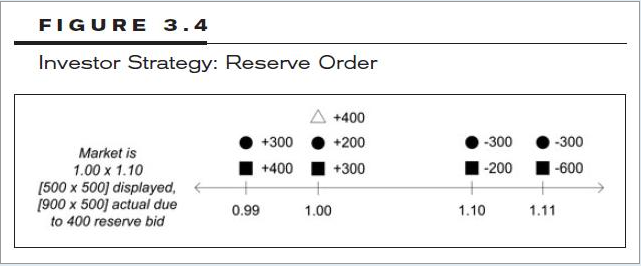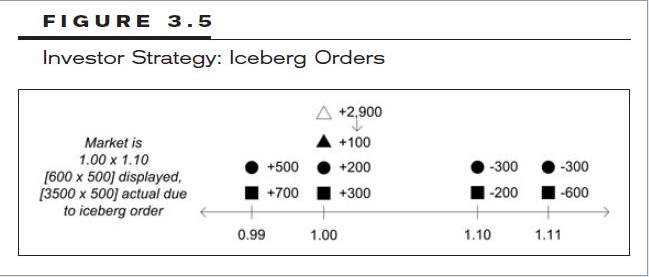Reserve orders and iceberg orders for high-frequency trading strategies
Author: Zero, Created: 2015-06-07 08:27:49, Updated: 2015-06-09 11:23:30Today's report is about two concepts, Reserve Orders and Iceberg Orders, which can be translated into Chinese as "hidden orders" and "iceberg orders". This is because some exchanges in the United States ("dark pools" as previously reported) allow traders to post orders without revealing the information about the order to the public. For example, the order book below shows two orders that are now visible at $1.00 for 200 shares and 300 shares, but in fact there is a hidden order for 400 shares that is not revealed to the public, and this hidden order for 400 shares is the Reserve order. So in fact the order volume at $1.00 should be 900 shares, not 500 shares seen on the order book.

Another type of order is an iceberg order, which, as the name implies, is a small volume of iceberg at sea level. An iceberg order is an order that reveals only a small amount of the order book, while the majority of the order is hidden. As shown in the figure below, you can see from the order book that there are three orders, 300 shares, 200 shares and 100 shares, for a total of 600 shares, but in reality there is a 3,000 share order, where the trader only reveals the amount of 100 shares in the order book, and hides the remaining 2,900 shares.

When someone eats 100 shares of the iceberg order displayed on a $1.00 sell order, the exchange immediately posts 100 more shares of the hidden order on the order book until all 2,900 of the hidden orders are sold. If the 100 share order revealed by the iceberg orders is executed, the exchange does not immediately post 100 shares in the order book from the hidden order, but after two seconds (or an indefinite amount of time to prevent detection) displays the 100 share order, which is called time slicing. The main reason for the existence of reserve orders and iceberg orders is that large investors don't want their buy/sell messages to be detected. However, big investment firms use reserve orders and iceberg orders to hide their trading motives, while high-frequency traders use more aggressive strategies to eat the tofu of these big investors.
- TypeError: Cannot access member 'GetRecords' of undefined at
:1:-1 Where is the problem? - On the strategy of single platform balancing
- Why choose to trade strategically on the FMZ Quantitative Trading Platform (BotVS)
- The strategy of making money could also be a coin.
- Inventors quantify the path of automated trading
- Three of the more classic strategies are Dual Thrust, R-Breaker, and Dynamic Breakout II.
- Bowen looks back on two years of the beach
- The Law of Grid Trading
- I've created a forum, use it for a while.
- Join the Makers in high-frequency trading strategy
- Poke for bargain high-frequency trading strategy
- Improvements and advantages of multi-platform hedge stability swap V2.7
- About being sucked in
- Single-point sniper with high-frequency stacking automatic counter-hand unlocking algorithm
- Penny Jump for high-frequency trading strategy
- Take out slow movers of high frequency trading strategy
- Push the Elephant in high-frequency trading strategy
- Scratch for the Rebate high frequency trading strategy
- Lean your market high-frequency trading strategy